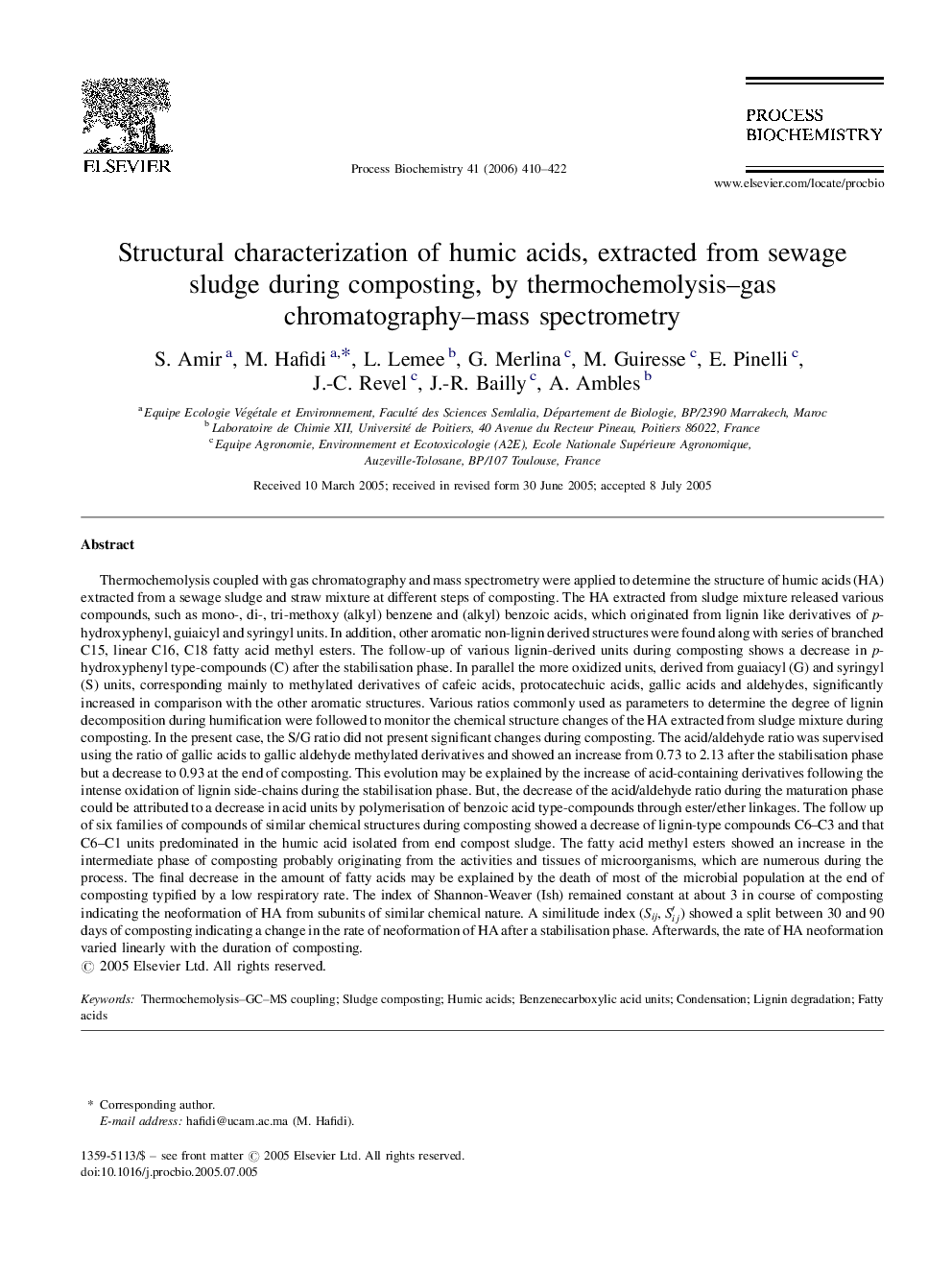| Article ID | Journal | Published Year | Pages | File Type |
|---|---|---|---|---|
| 36177 | Process Biochemistry | 2006 | 13 Pages |
Thermochemolysis coupled with gas chromatography and mass spectrometry were applied to determine the structure of humic acids (HA) extracted from a sewage sludge and straw mixture at different steps of composting. The HA extracted from sludge mixture released various compounds, such as mono-, di-, tri-methoxy (alkyl) benzene and (alkyl) benzoic acids, which originated from lignin like derivatives of p-hydroxyphenyl, guiaicyl and syringyl units. In addition, other aromatic non-lignin derived structures were found along with series of branched C15, linear C16, C18 fatty acid methyl esters. The follow-up of various lignin-derived units during composting shows a decrease in p-hydroxyphenyl type-compounds (C) after the stabilisation phase. In parallel the more oxidized units, derived from guaiacyl (G) and syringyl (S) units, corresponding mainly to methylated derivatives of cafeic acids, protocatechuic acids, gallic acids and aldehydes, significantly increased in comparison with the other aromatic structures. Various ratios commonly used as parameters to determine the degree of lignin decomposition during humification were followed to monitor the chemical structure changes of the HA extracted from sludge mixture during composting. In the present case, the S/G ratio did not present significant changes during composting. The acid/aldehyde ratio was supervised using the ratio of gallic acids to gallic aldehyde methylated derivatives and showed an increase from 0.73 to 2.13 after the stabilisation phase but a decrease to 0.93 at the end of composting. This evolution may be explained by the increase of acid-containing derivatives following the intense oxidation of lignin side-chains during the stabilisation phase. But, the decrease of the acid/aldehyde ratio during the maturation phase could be attributed to a decrease in acid units by polymerisation of benzoic acid type-compounds through ester/ether linkages. The follow up of six families of compounds of similar chemical structures during composting showed a decrease of lignin-type compounds C6C3 and that C6C1 units predominated in the humic acid isolated from end compost sludge. The fatty acid methyl esters showed an increase in the intermediate phase of composting probably originating from the activities and tissues of microorganisms, which are numerous during the process. The final decrease in the amount of fatty acids may be explained by the death of most of the microbial population at the end of composting typified by a low respiratory rate. The index of Shannon-Weaver (Ish) remained constant at about 3 in course of composting indicating the neoformation of HA from subunits of similar chemical nature. A similitude index (Sij, S′ijS′ij) showed a split between 30 and 90 days of composting indicating a change in the rate of neoformation of HA after a stabilisation phase. Afterwards, the rate of HA neoformation varied linearly with the duration of composting.
